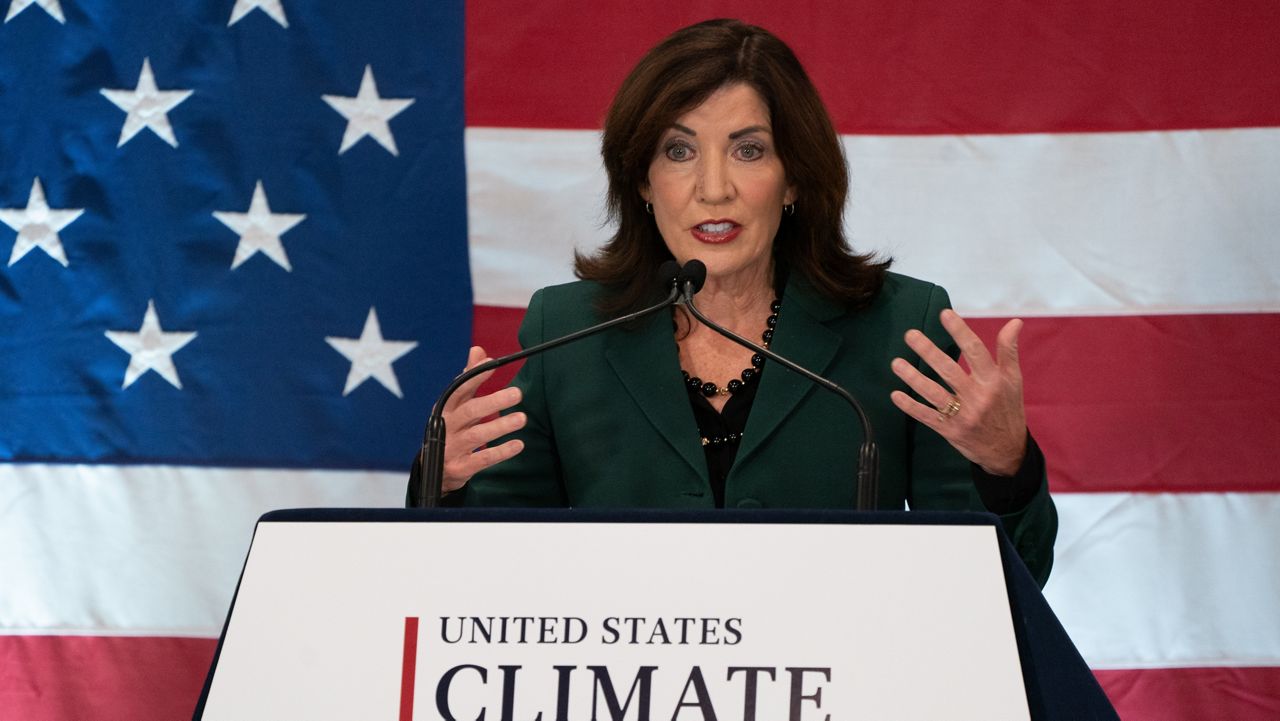Jobs
State invests $2.3M for wind energy jobs program

Gov. Kathy Hochul kicked off climate week in Midtown, saying she’s standing with the Biden administration for a multimillion-dollar investment to build up New York’s workforce training tied to offshore wind projects.
“As economies grow, in our country at least, the planet grew sicker and as a result we’re dealing with the effects right now,” she said at the Building and Construction Trades Council of Greater New York headquarters Monday.
What You Need To Know
- New York has $2.3 million to spend on a 500-person wind energy apprenticeship program, which is led by the International Brotherhood of Electrical Workers union
- Hindered by previously canceled projects, one offshore wind project is now underway and two more in the pipeline, set for completion by 2026
- A recent report from state Comptroller Thomas DiNapoli said although the MTA budgeted billions to beef up subway climate resiliency measures, such as preventing flooding or erosion. pausing congestion pricing could imperil those plans
New York has $2.3 million to spend on a 500-person wind energy apprenticeship program, which is led by the International Brotherhood of Electrical Workers union.
“We have to find this balance between growing our economies and the energy that’s required to support that, create 1000s of jobs, which is so important,” Hochul said.
Although New York’s vision for a green energy future includes ditching fossil fuels altogether, the transition has been slow and full of roadblocks.
“Everything literally from an infrastructure perspective, these projects have been challenged by interest rate challenges, interest rate challenges, supply change constraints,” Doreen Harris, president and CEO of the New York State Energy Research and Development Authority, told NY1 in Midtown on Monday.
Hindered by previously canceled projects, one offshore wind project is now underway and two more in the pipeline, set for completion by 2026.
“We’ve demonstrated that we’ve reset accordingly, but it is true that we have learned a lot along the way and remain excited at the future offshore wind will bring,” Harris said.
Thanks to Hochul, the future of another major climate related project is at a standstill: congestion pricing.
A recent report from state Comptroller Thomas DiNapoli said although the MTA budgeted billions to beef up subway climate resiliency measures, such as preventing flooding or erosion, pausing congestion pricing could imperil those plans.
“They’re absolutely not going to be delayed because we are on a path to achieve our energy goals, our climate goals. That has been baked into the calculations we are doing,” Hochul told NY1 when asked on Monday.
Hochul faces multiple lawsuits to start the program, aimed at reducing roadway congestion and pollution.
She has yet to reveal her preferred way forward, Hochul previously committed to a January 2025 deadline.
“This is a temporary pause. That $15 at this time is just too much to put on everyday New Yorkers who are struggling. But that doesn’t mean that we are not fully committed,” she added.
Meanwhile, the state has other projects under way, including a massive transmission line from Canada to New York City.
“If you think about the way the power system works, it’s sort of like an interstate highway system: it gets clogged up, it gets jammed up and these projects are designed to enable more energy to flow through those lines,” Justin Driscoll, president and CEO of New York Power Authority, said.
He said right now, New York produces about 10% of all the energy it uses.
But the eventual goal is to significantly increase that metric.
“A challenge in New York state is what we call the tale of two grids — where upstate you have largely renewable power and downstate heavily reliant on fossil generation historically. We’re trying to flip that,” he told NY1.
Hochul has said she remains committed to mandates laid out in a 2019 climate law, but acknowledged that New York’s progress has been slow.








